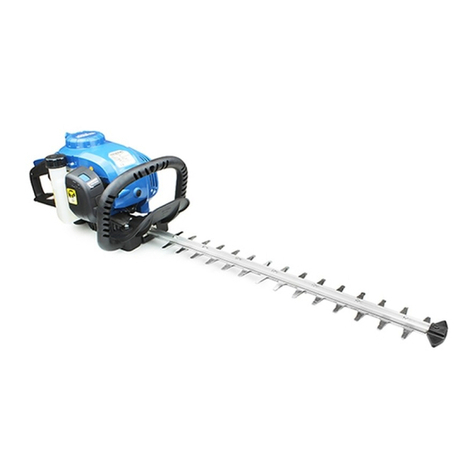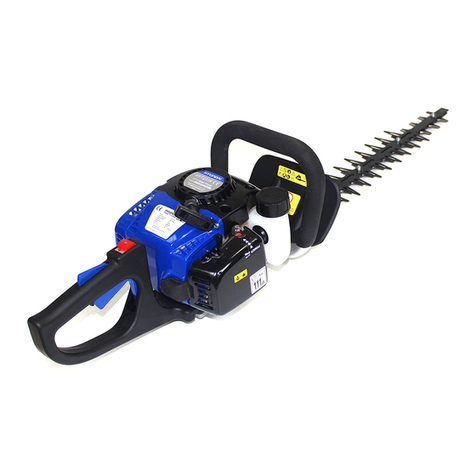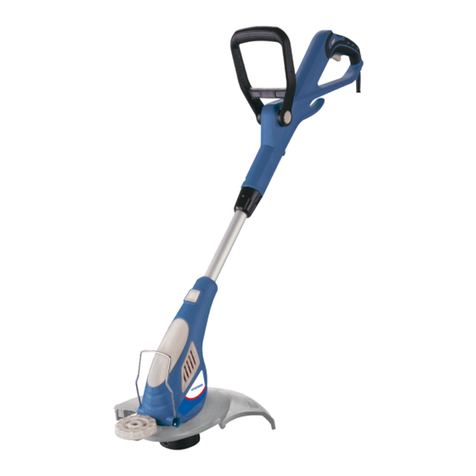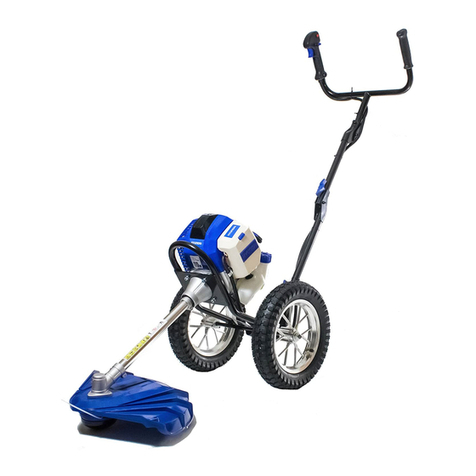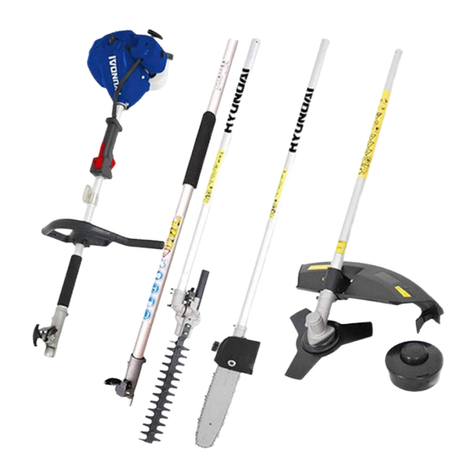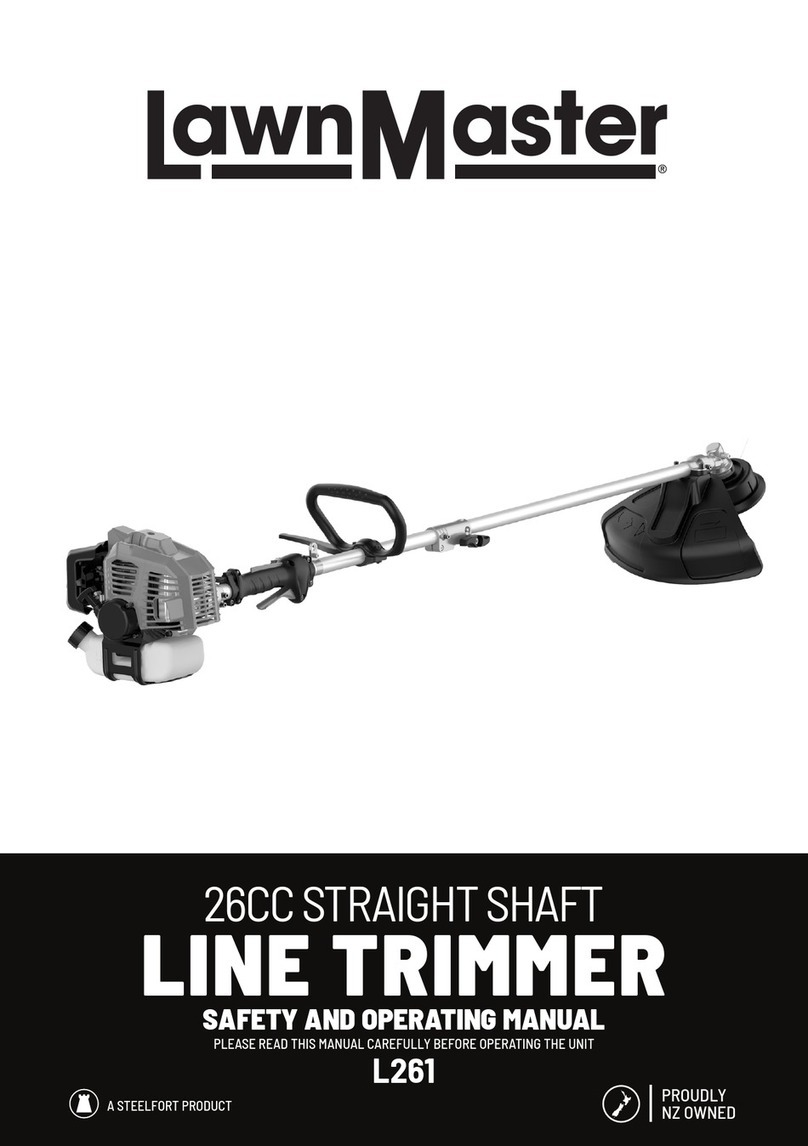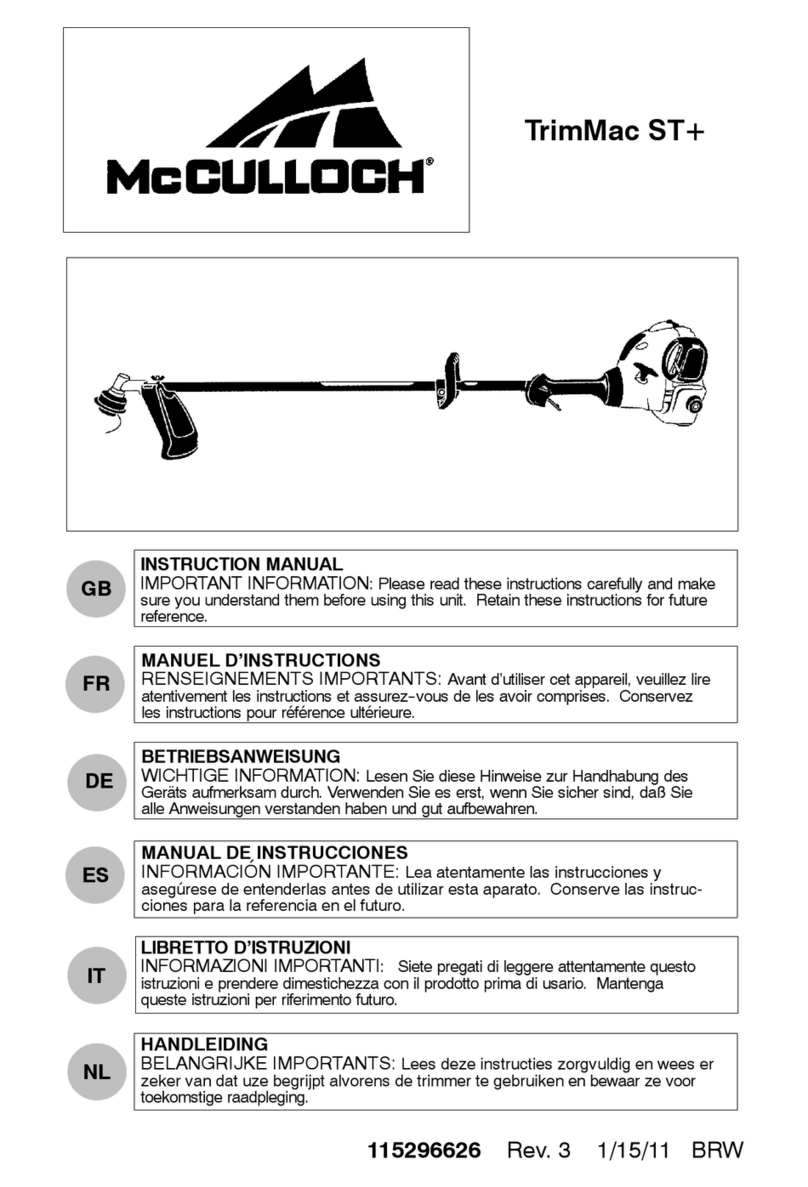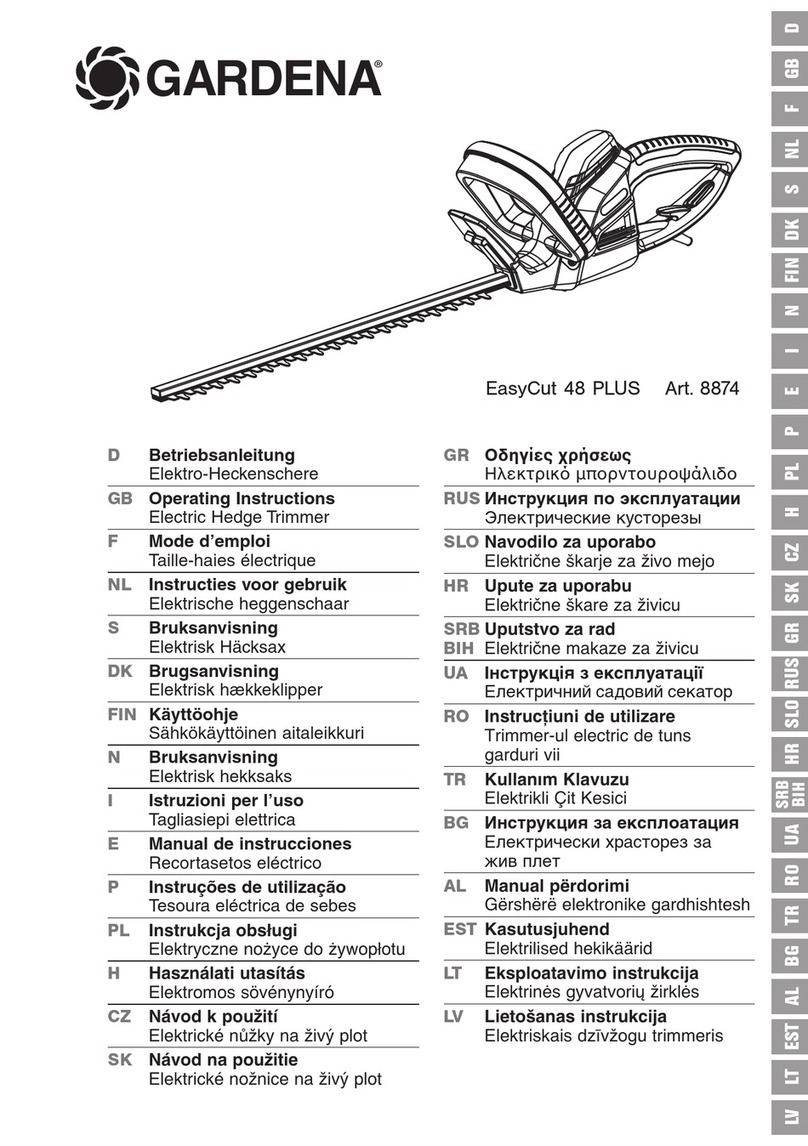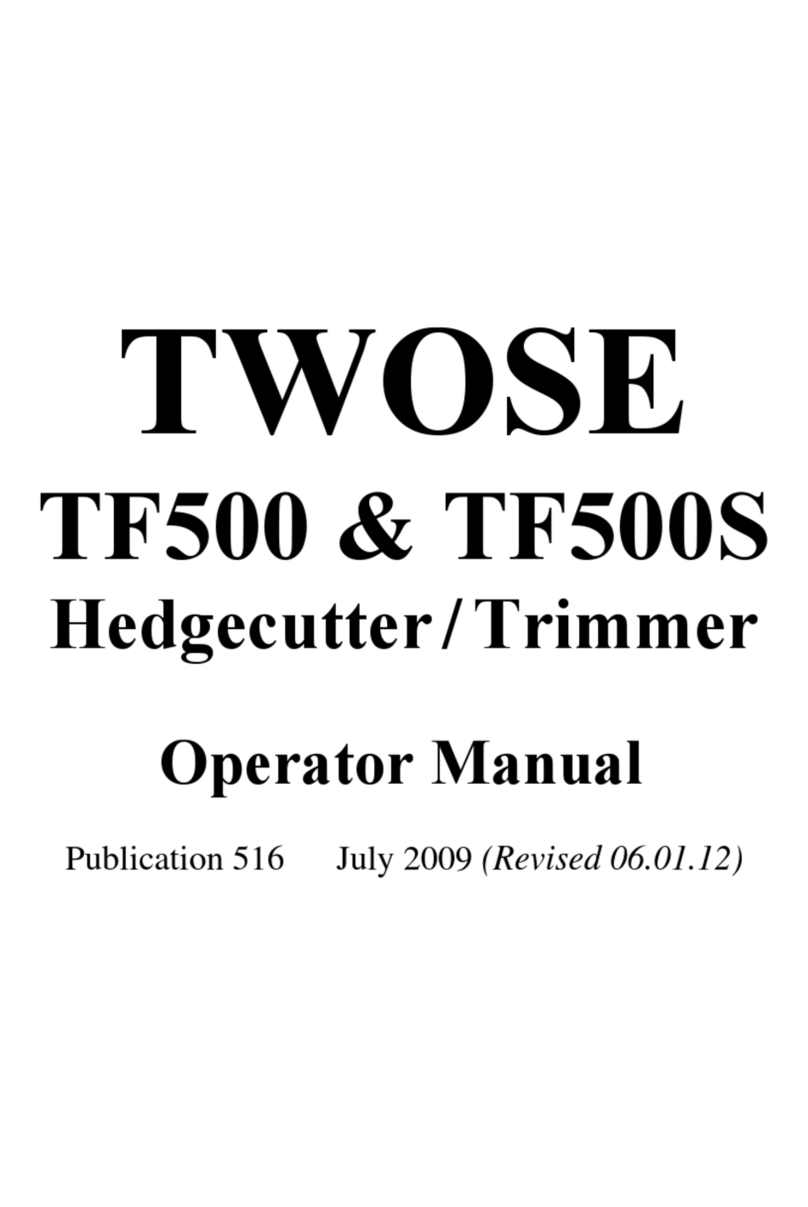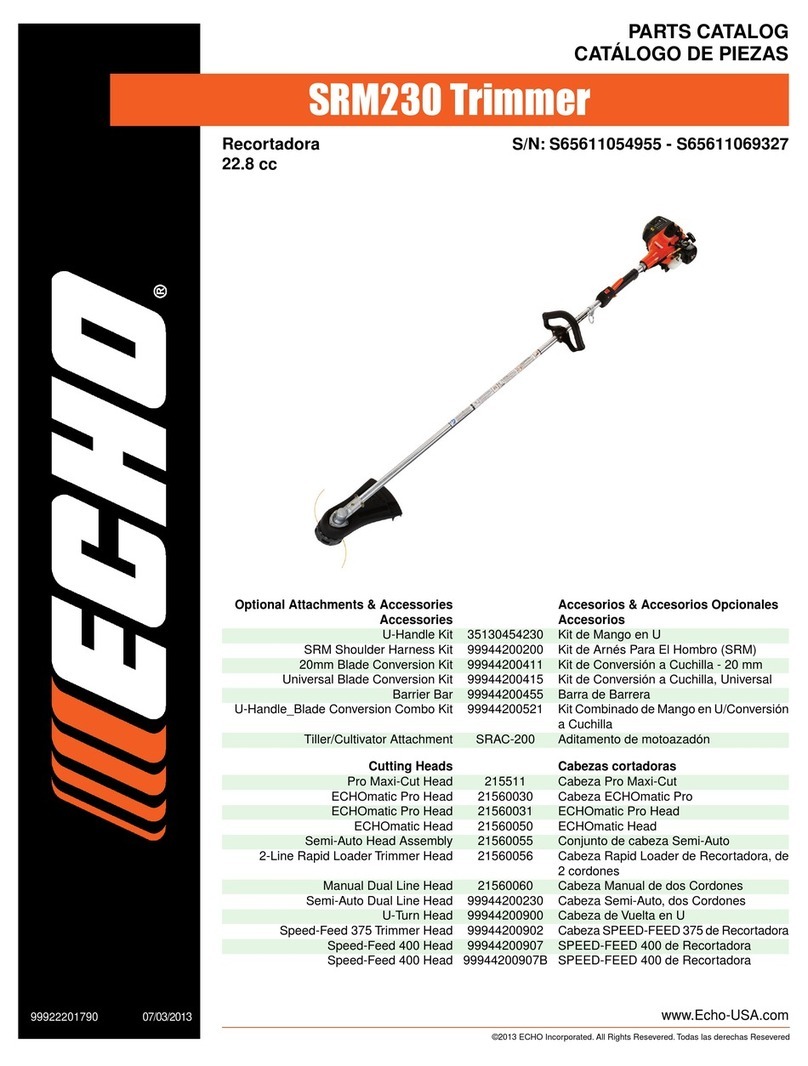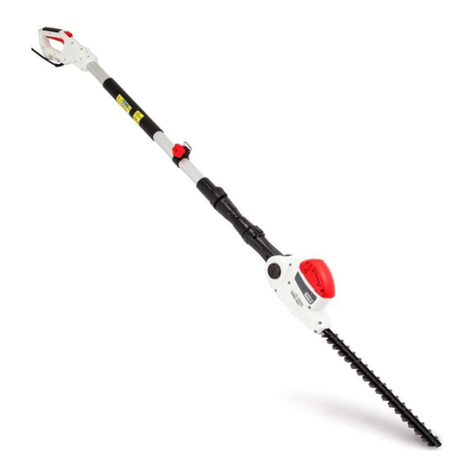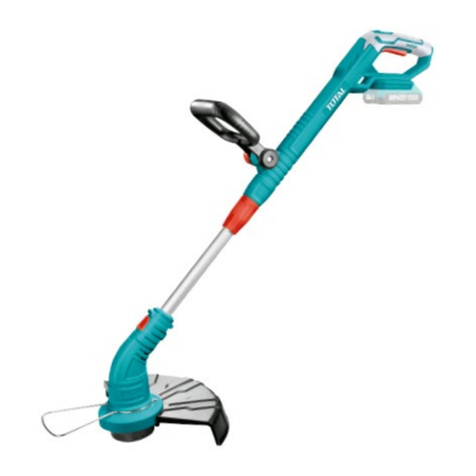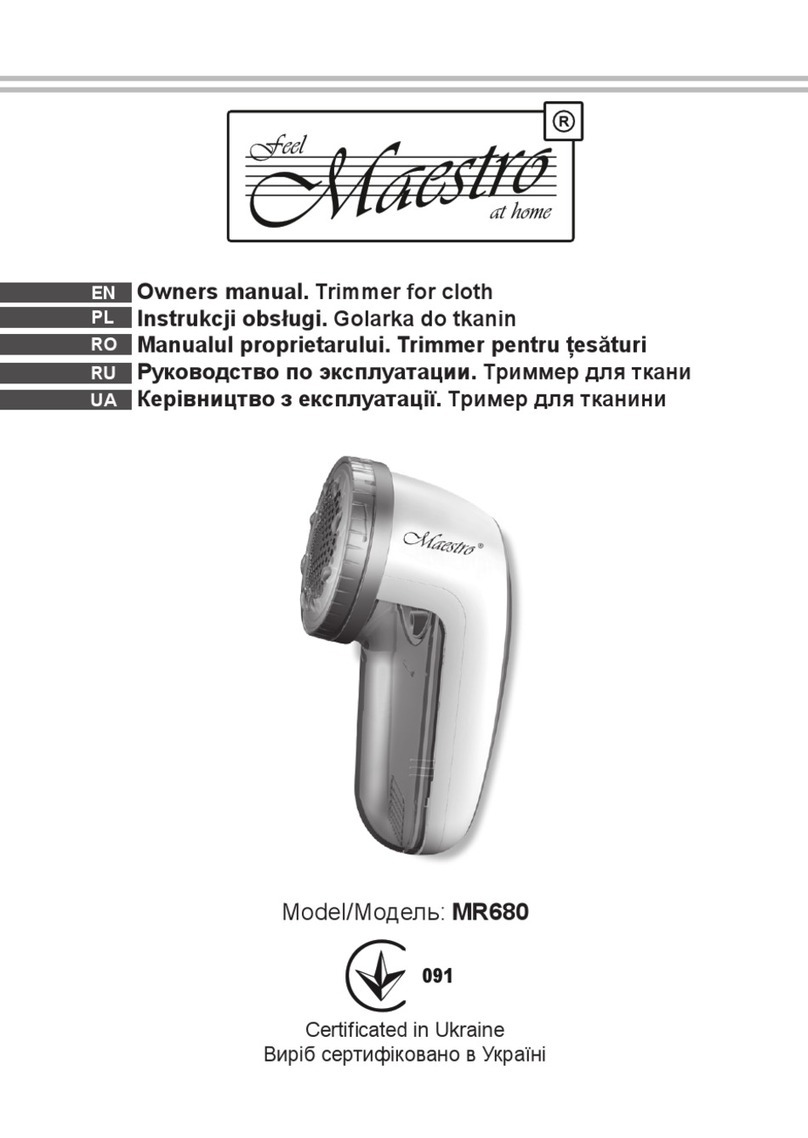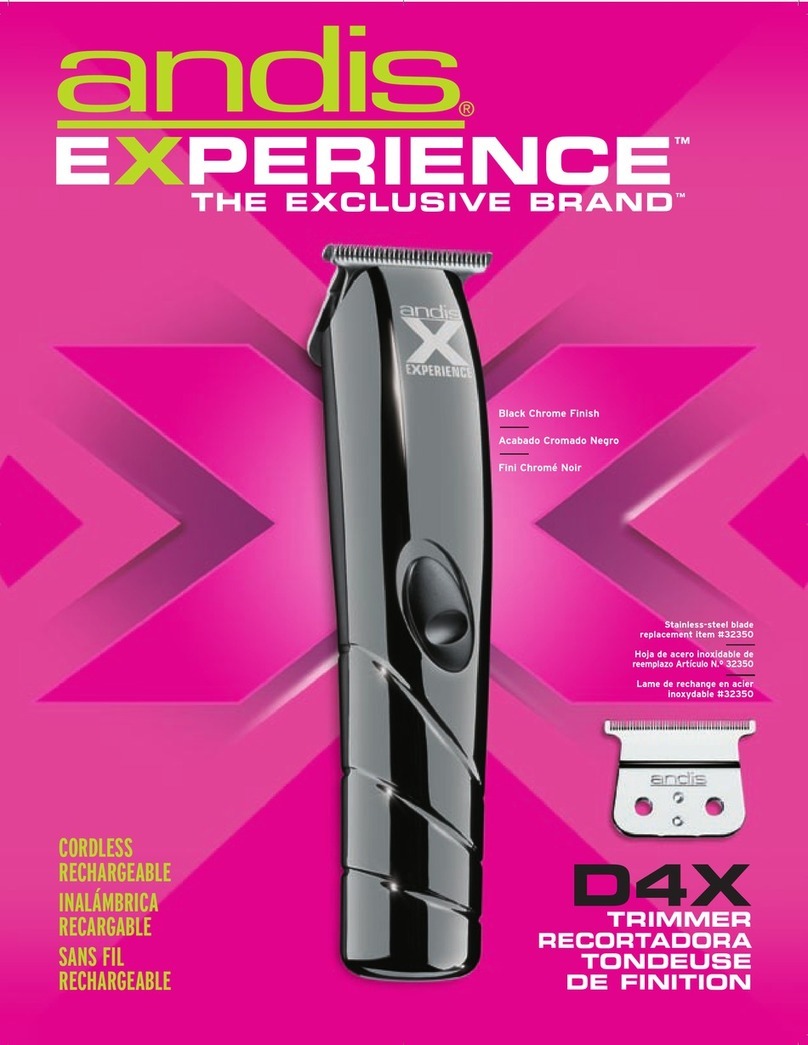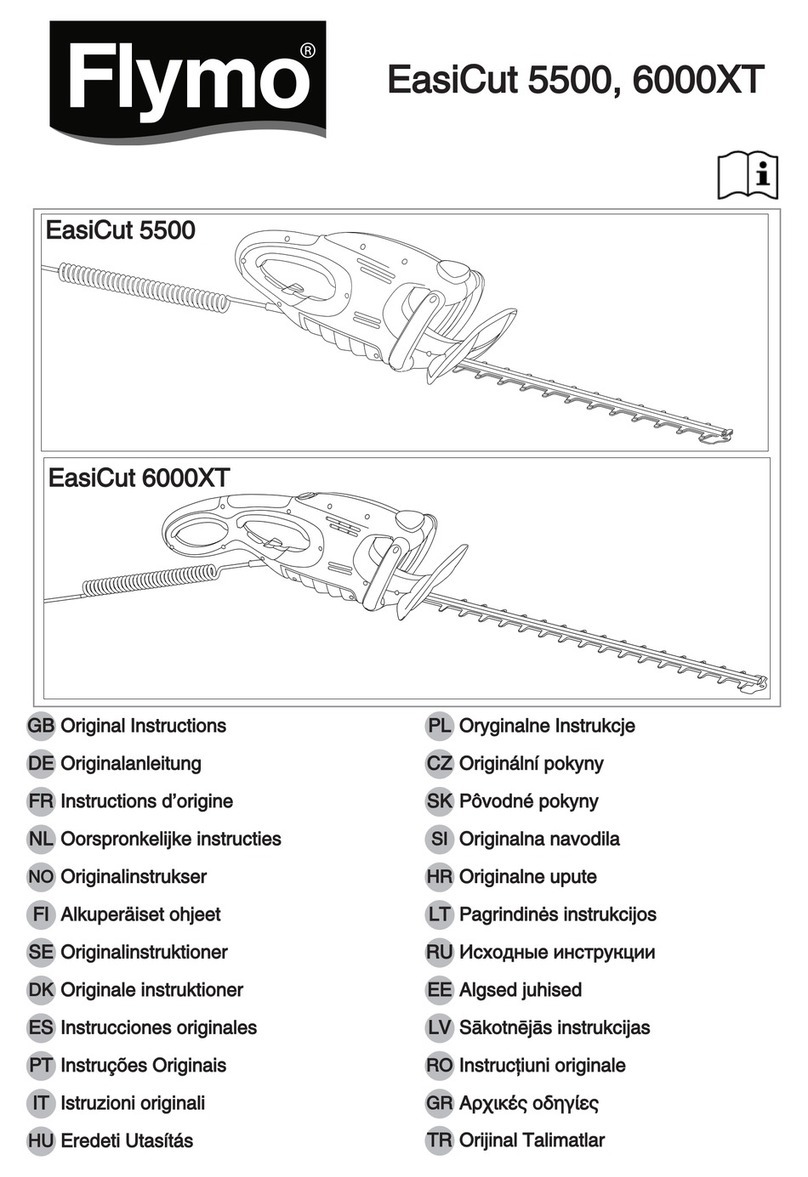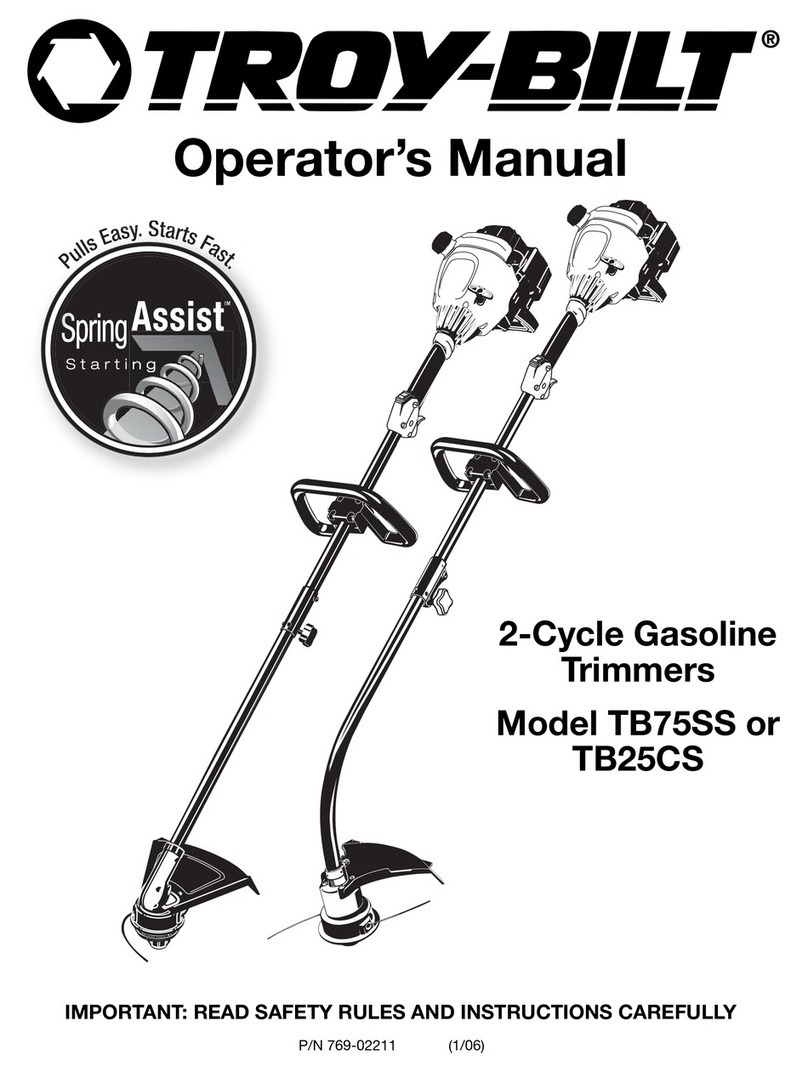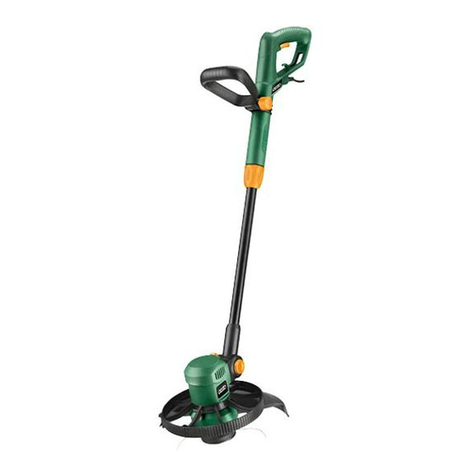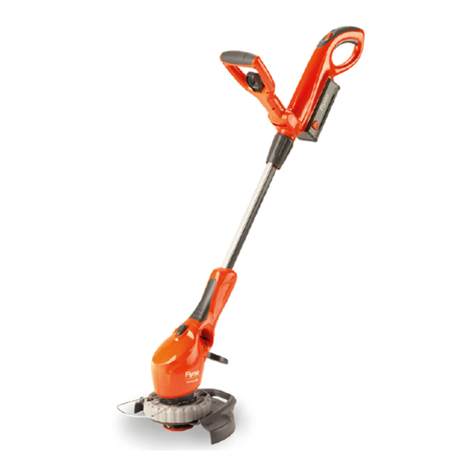
4
Keep cable away from cutting area. During operation the cable may be hidden in
shrubs and can be accidentally cut by the blade.
Check for any foreign objects in the hedge, such as wire fences.
Hold the hedge trimmer correctly, for example with both hands if it is equipped with two
handles.
Anyone who uses or performs maintenance work on this machine must be familiar with
these instructions and are aware of possible hazards. Prevent children, sick people or
not able to use the machine. While you are standing in the work area, be aware of the
presence of children
Observe local or regional safety measures in your area. This also applies to all
provisions relating to safety at the workplace and to health prevention in the workplace
The manufacturer cannot be held responsible if the machine has been modified in an
unauthorized manner or in such a way as to constitute a final damage.
Observe the nature of the area where the work is being performed.
When cutting, make sure you have good lighting.
Ensure your stability when working on slopes or on irregular surfaces or in the presence
of moisture, snow or frost.
Do not allow unauthorized persons to approach the machine. Visitors and spectators,
especially children, the sick or the disabled, must not have access to the work area.
Take precautions when storing the tool. When the machine is not in use, it must be
stored in a dry, if possible high or protected place, in order to prevent access.
Use the tool for the tasks you want to perform. In this context, it is advisable, for
example, to avoid using a tool or a small accessory for a job requiring the use of a
heavy tool.
Use the tool only for the purpose for which it was designed.
Wear appropriate clothing. Your outfit should be appropriate to work and not bother you.
Wear protective clothing that protects against cuts.
Use personal protective equipment. This includes at least: safety shoes, goggles, ear
protectors, protective gloves, etc.
Never use an unsafe cutting tool. There is a risk of injury from projected objects.
Before starting the trimmer, remove all the keys and check that the tool is securely
assembled.
Stay alert at all times. Be attentive to what you are doing. Make use of your common
sense. Do not use the tool when you are tired. Do not use the tool under the influence of
alcohol, drugs or drugs that alter or decrease concentration. Also, do not use the tool
when you are sick.
After using the machine for an extended period of time, you may experience circulation
problems in your hands. Extend the duration of use by wearing appropriate gloves and
taking regular breaks. Please note that the running time of the motorized machine is
shortened due to user discomfort due to poor circulation, too low outside temperature or
excessive machine driving power during the works.
Take account of damaged components. Check the machine before using it. Damaged
components must be repaired or replaced as soon as possible by authorized persons.
Defective switches must be replaced by an authorized dealer. Do not use the machine if
it cannot be turned off or turned on with a switch. When repairs are required, please
contact your nearest dealer.
Before any adjustment or maintenance operation, the motor must always be switched
off.
Use only approved components. Use only identical replacement parts as replacements
during maintenance or repair work. Contact your authorized dealer for advice. Do not
use metal swivel chains and flail blades.
When transporting and storing the tool, make sure it is secure. Put the protective device




